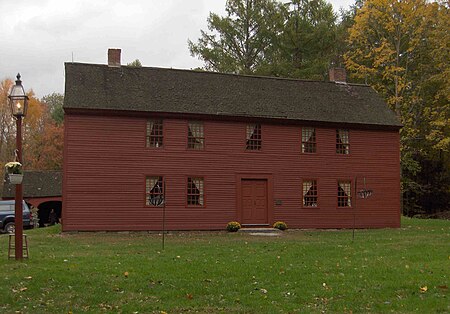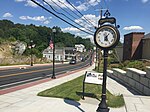Strong House (Coventry, Connecticut)
1710 establishments in ConnecticutHistorical society museums in ConnecticutHistory museums in ConnecticutHouses completed in 1710Houses in Coventry, Connecticut ... and 3 more
Houses on the National Register of Historic Places in ConnecticutMuseums in Tolland County, ConnecticutNational Register of Historic Places in Tolland County, Connecticut

The Strong House, now the Strong-Porter Museum, is a historic house museum at 2382 South Street in Coventry, Connecticut. It is a 2+1⁄2-story wood-frame structure, five bays wide, with a center entry and two interior chimneys. The oldest portion of the house is estimated to date to 1710, early in the period of Coventry's settlement, and retains a significant number of period features. The house was listed on the National Register of Historic Places in 1988. It is now owned and operated by the Coventry Historical Society as a museum. In addition to exhibits in the house about local history, visitors can tour the carpenter shop, 19th century privy, carriage sheds and barn.
Excerpt from the Wikipedia article Strong House (Coventry, Connecticut) (License: CC BY-SA 3.0, Authors, Images).Strong House (Coventry, Connecticut)
Reynolds Drive,
Geographical coordinates (GPS) Address Website Nearby Places Show on map
Geographical coordinates (GPS)
| Latitude | Longitude |
|---|---|
| N 41.766111111111 ° | E -72.348611111111 ° |
Address
Nathan Hale State Forest
Reynolds Drive
06238
Connecticut, United States
Open on Google Maps







